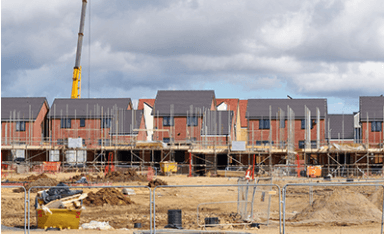Private investor levelling up ambitions
20/05/22 by IGOR GORBATSEVICH

Investing, Shojin
Jatin Ondhia, Shojin's CEO, was recently interviewed by Property Investor Today talking about how the UK Government’s policy of improving the quality of life outside of London is central to its raison d'être. ‘Levelling up’ once again made an appearance in the recent Queen’s speech, part of a wide-reaching bill.
Yet while it may be a vote winner, the impact of the policy on the ground has been difficult to discern. In fairness to the Government, a lot has happened since the 2019 election – and it’s at least a positive sign that it remains part of their agenda.
One area in which levelling up is much needed is the regeneration of residential areas and in particular the provision of housing. Rents and house prices in the north of England and other parts of the UK are lower than in London, but increasing rapidly. This is the result of years of under-development and continuous increase in demand. Each year thousands of university graduates come into the workforce and want to take their first step on the housing ladder, but are prevented from doing so due to lack of supply and increasing prices. The housing crisis is a national issue and one we can only solve by boosting the supply of new homes. It’s here that I believe private investors can play a crucial role.
Perfecting the recipe for successful development projects
I’ve been investing in property, both professionally and as part of my personal portfolio, for over two decades. What I’ve learnt is that there are a few things that need to come together if a development project is to succeed: great vision, ambition, and adequate funding.
Failure to deliver on any of these and you’re unlikely to have much luck. The de-facto strategy of the Government has so far been to encourage a relatively small number of huge development projects funded by institutional investors.
Big developers can back these types of projects, like the regeneration of the King’s Cross area, and they inevitably attract bright architects and designers. The results are often spectacular, but this simply isn’t a model that can be applied up and down the country. It also takes several years to get each scheme off the ground. We need to be able to deliver vision, ambition, and funding on a smaller, more repeatable scale that can be applied rapidly.
How mid-sized developers will be essential to levelling up
Mid-sized development projects are exactly the sort of thing that regions around the UK need and will have the greatest impact on improving the housing supply. Mid-sized developers are no less capable of building high-quality homes, but they lack the scale individually for mass projects.
Unfortunately, it’s not as easy as directing companies to go out and build more homes. Mid-sized developers face a ‘funding gap’ – where their capital requirements rise more than proportionally as the physical scale of the projects increase. In the UK, a bank loan for developers might stretch to 70% of the cost, but that still leaves 30% for the developers to fund and, as with any growing business, it is likely that the developer will not have that much cash available. That 30% is referred to as “Junior Funding”, notably Mezzanine and Equity funding. When a developer is small, they can borrow from friends and family to fill this funding gap, but as they start working on larger projects they outgrow their own network. So, when a developer needs an additional £1m-£10m in Junior Funding, they may struggle to raise the capital and choose to walk away from the project instead. Unfortunately this size of investment is too small for the private equity houses, but too big for most individual investors.
This creates a strange situation where it can be easier for a developer to raise £20m in equity than it is to raise £2m in equity. This means those highly experienced mid-sized developers often can’t pursue as many projects as they would like to, despite the demand existing.
Fortunately, there is a way forward. Digital property investment platforms open mid-sized development projects to a wide array of investors by reducing the barrier to entry through fractionalisation.
In short, this means many investors can all contribute a smaller sum individually and together, they’re able to finance the kind of mid-sized projects that we need in the UK. Property developers are happy to share their profits with these investors, without whom the project may never get off the ground. Meanwhile investors are happy because they are getting the opportunity to invest in lucrative real estate development projects which would otherwise not be available to them.
Property investors can benefit themselves – and do good
This wave of digital property investment platforms offers a great opportunity for property investors to align themselves with a key societal goal. The sector has also taken steps to set wide-reaching standards and transparency through the recently formed Association of Real Estate Investment Platforms, or AREIP, and many are FCA-regulated, so investors can invest with confidence.
If we can take strong investor returns and combine them with transparency and trust for investors and opportunities for mid-sized developers, I believe we can have an enormous impact on tackling the housing crisis here in the UK.